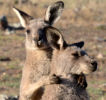
The ACT Government has obtained licences to kill 1,600 healthy kangaroos, plus an unknown number of joeys, in Canberra’s nature reserves over the next 3 months. However, for the first time, Animal Liberation ACT is standing up for the ACT’s native animals by challenging the Government’s killing program in the courts. The start of the annual kangaroo kill has been delayed after Animal Liberation ACT successfully obtained an injunction in the ACT Civil and Administrative Tribunal on 20 May 2014. Support is now needed to continue our Legal Challenge to Stop the ACT Government's Kangaroo Cull. The newly established Animal Defenders Office has provided pro bono legal services to get us to this point. We now need to raise funds urgently to cover the costs of a barrister for the legal battle ahead of us in the main hearing which began on Tuesday the 3rd of June 2014. The hearing ran for four days, and a decision is expected next week on whether to allow the killing of more than 1,600 kangaroos on Canberra's 'nature' reserves. Small and large donations welcome.
Donate via Go Fund Me at http://www.gofundme.com/SaveRoos Legal costs are expected to $20,000. Let's make this case huge! Animal Liberation ACT would like to sincerely thank the Animal Defenders Office for their incredibly hard work and professionalism in taking this case to a new level. We would also like to thank our Kangaroo Campaign members for all their work behind the scenes in assisting the legal team with the case. Thank you in advance supporters!
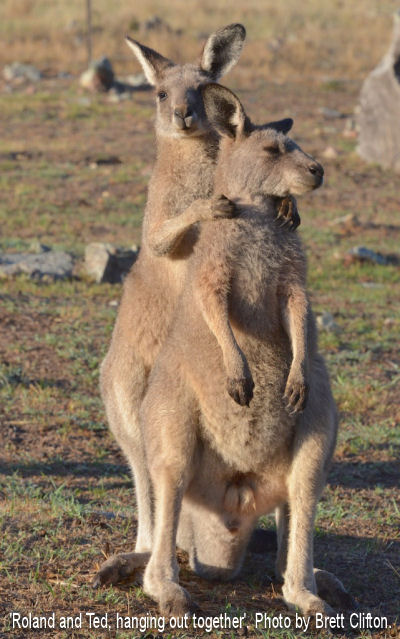 Donate via Go Fund Me at http://www.gofundme.com/SaveRoos
Donate via Go Fund Me at http://www.gofundme.com/SaveRoos
For other candobetter.net about kangaroo culls, especially in the ACT see this tag.
"ACT government senior ecologist Dr Donald Fletcher [see more below] defended the research behind the cull, as a hearing before the full bench of ACAT entered its third day on Thursday [5 June 2014]. [...] At one point [Animal Liberation's lawyers] argued a graph, which contained data used to justify the shootings at one reserve, was "pretty useless", although Dr Fletcher stood by most of the figures in the report.
Dr Fletcher admitted he hadn't made adjustments to the population figures throughout the year, and didn't take into account fluctuations due to the time of year the kangaroo populations were counted. He said that meant the government was likely to be ''under-culling'' this year. ''One of the flaws is I haven't allowed for that spring increment,'' he said. Dr Fletcher said several times he couldn't remember how he had calculated certain figures in the population growth estimates. When questioned by lawyers, Dr Fletcher said one of the figures in the data did not demonstrate good science.
[...] On Wednesday, former CSIRO plant scientist Dr William Taylor told the hearing there were "significant deficiencies" in the data the ACT government used for the cull.
The tribunal allowed last year's cull to go ahead following a similar legal challenge brought by animal welfare groups, and a decision was made to target fewer animals.
More than 1500 kangaroos were shot dead in last year's cull, including 355 [in pouch joeys]." Source: http://www.theage.com.au/act-news/act-government-ecologist-defends-kangaroo-cull-figures-at-hearing-20140605-zrz34.html
For the first time the 'science' behind the annual Kangaroo cull has been called into question and we have to thank everyone who worked tirelessly behind the scenes to create such a strong case against the Government. Thank you also to those who attended the hearing, your presence was extremely supportive. And a huge thank you to the ADO team who without their knowledge, professionalism and what became hundreds of hours of work, we would not have had a case.
Animal Liberation ACT’s lawyers, the Animal Defenders Office, persuaded a judge to grant a stay against the kangaroo cull on the basis that the government has failed in its duty to prove the kangaroo cull had improved biodiversity over the past six years.
“They have not collected any baseline data or monitoring data on the conditions of other species on the reserves they say they are saving,” says legislative drafter Ward, who moonlights as a volunteer with the Animal Defenders Office. “If the government wants to go and kill more than 1,600 healthy wild animals, we have to be clear that the science is impeccable before we let them do that.”
Dr Fletcher’s Phd thesis oddly at odds with Canberra culls
(For full article about previous culls see "ACT Roo killings: Who profits? Behind the Earless Dragon mask")
One scientist who was closely associated with the Belconnen cull and the Majura cull, was Don Fletcher. Fletcher is the Senior Ecologist in Research and Monitoring in Parks, Conservation and Lands, Department of Territory and Municipal Services, ACT. His involvement in the Belconnen Roo cull seems to have been officially limited to capturing then releasing female survivors after inserting contraceptives in them. He was one of the writers of the public consultation document leading up to the Majura cull.
He defended these culls and has defended the assessments leading up to the Majura culls in a public consultation document. Yet his own thesis on the “Population Dynamics of Eastern Grey Kangaroos in Temperate Grasslands,” seemed to discredit claims at the basis of these culls, which were too high population density and a need to manage it down to one kangaroo per hectare. For instance, he wrote on page 237 of his study that :
“The study did not provide evidence that high densities of kangaroos reduce groundcover to the levels where erosion can accelerate. Unmanaged kangaroo populations did not necessarily result in low levels of ground cover. Groundcover had a positive but not significant relationship to kangaroo density, with the highest cover at the wettest site where kangaroo density was highest. Weather has an important influence on groundcover.[1]”
He also wrote that some of the populations he was studying were at the highest density recorded. They ranged between 4.5 and 5.1 kangaroos per hectare. The density in the studies below was expressed in square kilometers. To get density per hectare, divide by 100. [2] Fletcher wrote:
“The kangaroo density estimates reported in Chapter 7 for the three study sites (mean eastern grey kangaroo densities of 450, 480 and 510 km2) are the highest kangaroo densities reported. For comparison, the maximum density of combined red kangaroos and western grey kangaroos in the Kinchega study was less than 56 km2 (Bayliss 1987) and the density of eastern grey kangaroos at Wallaby Creek (Southwell 1987b) was 41 to 50 km2. The next highest kangaroo density outside the vicinity of my study sites appears to be that of Coulson et al. (1999a) for eastern grey kangaroos at Yan Yean Reservoir near Melbourne, which was 220 km2.”
Coulson’s study of kangaroos at 2.2 per ha was published in 1999 as Coulson G, Alviano P, Ramp P, Way S “The kangaroos of Yan Yean: history of a problem population”. [3] Graham Coulson’s Yan Yean article is frequently cited by kangaroo population students and he seems to be thought of as the originator of the “one kangaroo per kilometer” ‘rule’.
I did contact Dr Fletcher by email, and he was initially quite friendly, but when I attempted to ask him questions about his thesis responses to my emails ceased, even though I re-sent the emails.
NOTES
[1] Don Fletcher, “Population Dynamics of Eastern Grey Kangaroos in Temperate Grasslands,” was on line as a pdf, which is the form I downloaded it as. Now apparently only available from University of Canberra Library, reference: http://nla.gov.au/anbd.bib-an42269526. A book by the same title and author has also been published.
[2] There are 100 ha in one square km. So if density varied between 450 and 510 kangs per square km, then that is 4.5 p ha or 5.10 per ha. With 220 per square km 2.2 per ha.
[3] Coulson G, Alviano P, Ramp P, Way S (1999). “The kangaroos of Yan Yean: history of a problem population”, Proc R Soc Vic 111: 121–130.
 Wednesday 27 November 2024: The National Disability Insurance Agency (NDIA) advised the Australian, New Zealand and Asian Creative Arts Therapies Association (ANZACATA) on Monday 25 November that arts therapy will not be continued as a Therapy Support after 2 December 2024. On 26 November the NDIA posted different guidelines on its website without consultation or explanation.
Wednesday 27 November 2024: The National Disability Insurance Agency (NDIA) advised the Australian, New Zealand and Asian Creative Arts Therapies Association (ANZACATA) on Monday 25 November that arts therapy will not be continued as a Therapy Support after 2 December 2024. On 26 November the NDIA posted different guidelines on its website without consultation or explanation.
 The Canberra Times mentioned the Regional Australia institute on 11 August 2019 in
The Canberra Times mentioned the Regional Australia institute on 11 August 2019 in 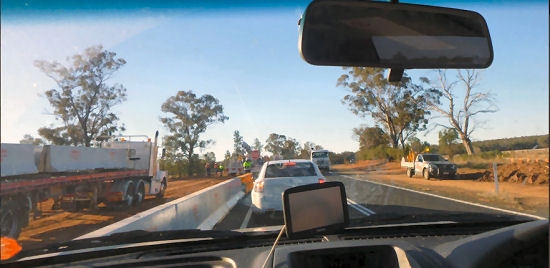
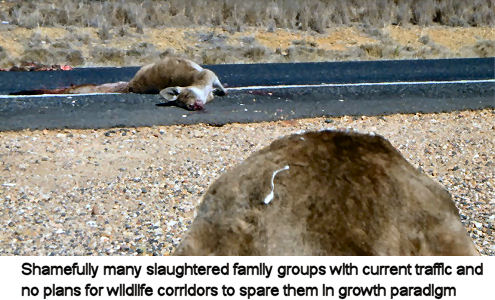

 Michelle Thomson, of Animalia, is hosting two wildlife care workshops with Linda "Indi" Dennis: one is on kangaroos and the other is on wombats. The workshops teach how to care for Kangaroos, Wallabies, and other Macropods and for wombats. Linda "Indi" Dennis is a well known wildlife carer,educator and advocate for our wildlife. By the way, Animalia, which operates on a shoestring, has advance-funded this workshop and now a major funding source has fallen through. The Animal Shelter may have to close if no fresh funds come in; the situation is actually desperate. Please consider
Michelle Thomson, of Animalia, is hosting two wildlife care workshops with Linda "Indi" Dennis: one is on kangaroos and the other is on wombats. The workshops teach how to care for Kangaroos, Wallabies, and other Macropods and for wombats. Linda "Indi" Dennis is a well known wildlife carer,educator and advocate for our wildlife. By the way, Animalia, which operates on a shoestring, has advance-funded this workshop and now a major funding source has fallen through. The Animal Shelter may have to close if no fresh funds come in; the situation is actually desperate. Please consider 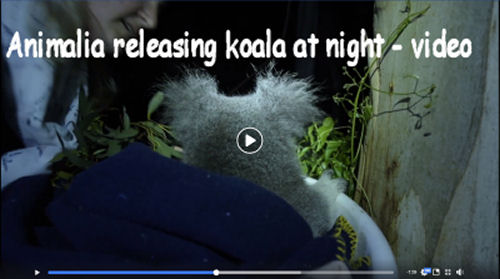
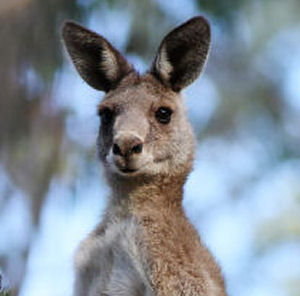
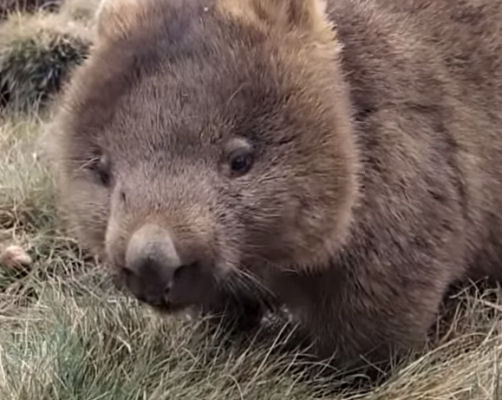
 The ACT Government has obtained licences to kill 1,600 healthy kangaroos, plus an unknown number of joeys, in Canberra’s nature reserves over the next 3 months. However, for the first time, Animal Liberation ACT is standing up for the ACT’s native animals by challenging the Government’s killing program in the courts. The start of the annual kangaroo kill has been delayed after Animal Liberation ACT successfully obtained an injunction in the ACT Civil and Administrative Tribunal on 20 May 2014. Support is now needed to continue our Legal Challenge to Stop the ACT Government's Kangaroo Cull. The newly established Animal Defenders Office has provided pro bono legal services to get us to this point. We now need to raise funds urgently to cover the costs of a barrister for the legal battle ahead of us in the main hearing which began on Tuesday the 3rd of June 2014. The hearing ran for four days, and a decision is expected next week on whether to allow the killing of more than 1,600 kangaroos on Canberra's 'nature' reserves. Small and large donations welcome.
The ACT Government has obtained licences to kill 1,600 healthy kangaroos, plus an unknown number of joeys, in Canberra’s nature reserves over the next 3 months. However, for the first time, Animal Liberation ACT is standing up for the ACT’s native animals by challenging the Government’s killing program in the courts. The start of the annual kangaroo kill has been delayed after Animal Liberation ACT successfully obtained an injunction in the ACT Civil and Administrative Tribunal on 20 May 2014. Support is now needed to continue our Legal Challenge to Stop the ACT Government's Kangaroo Cull. The newly established Animal Defenders Office has provided pro bono legal services to get us to this point. We now need to raise funds urgently to cover the costs of a barrister for the legal battle ahead of us in the main hearing which began on Tuesday the 3rd of June 2014. The hearing ran for four days, and a decision is expected next week on whether to allow the killing of more than 1,600 kangaroos on Canberra's 'nature' reserves. Small and large donations welcome. 
Recent comments